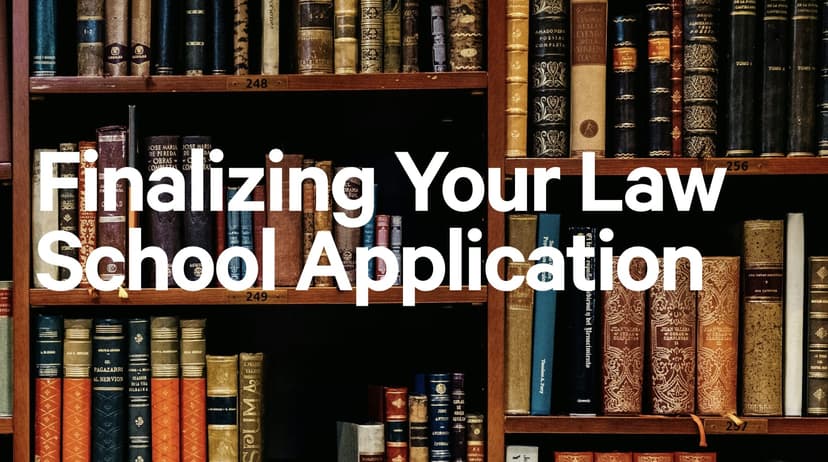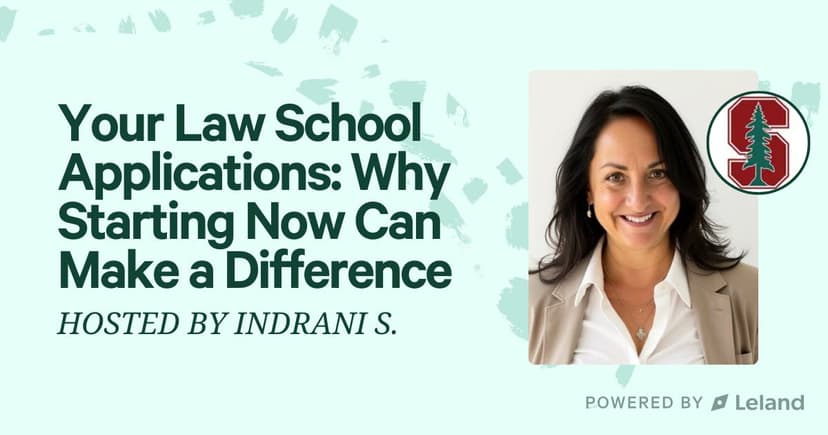The Top 10 Early Decision Programs
Are you considering applying to college through an early decision program? Look no further! Our article highlights the top 10 early decision programs, providing valuable insights and information to help you make an informed decision.
Posted June 13, 2025

Join a free event
Learn from top coaches and industry experts in live, interactive sessions you can join for free.
Table of Contents
Are you a high school senior unsure of where to apply for college next fall? Are you looking for a way to improve your chances of getting into your top-choice school? Early decision programs may be the answer that you’re looking for.
What is Early Decision?
Early decision is a program offered by some colleges and universities that allows students to apply early, typically by November 1st, and receive a decision by mid-December. Students who apply under an early decision plan must commit to attending the school if accepted and withdraw all other applications.
It is important to note that early decision is a binding agreement, meaning that if a student is accepted, they are obligated to attend the school and withdraw all other applications. This can be a great option for students who have a clear top choice and are willing to make a commitment early in the application process. However, it is important to carefully consider the financial implications of early decision, as students may not have the opportunity to compare financial aid packages from multiple schools.
Benefits of Applying Early Decision
One of the biggest benefits of applying early decision is that it can significantly increase your chances of getting accepted into your top-choice school. This is because early decision candidates are typically reviewed in a smaller pool of applicants, giving them an advantage over students who apply in the regular decision pool. Additionally, applying early decision can demonstrate to colleges and universities that you’re committed to attending their institution, which can also work in your favor.
Another benefit of applying early decision is that you can receive your admission decision sooner. This can alleviate some of the stress and uncertainty that comes with waiting for college acceptance letters. It also gives you more time to plan and prepare for your college experience, such as researching housing options and financial aid opportunities.
It’s important to note that applying early decision is a binding agreement, meaning that if you’re accepted, you’re committed to attending that school. However, if you have done your research and are confident that the school is the right fit for you, then applying early decision can be a great option. Just be sure to carefully consider all of your options and weigh the pros and cons before making a decision.
Drawbacks of Applying Early Decision
One of the main drawbacks of applying early decision is that it is a binding agreement, meaning that if you are accepted, you must attend the school, even if its financial aid offer is not sufficient. Additionally, because early decision applications are reviewed in a smaller pool, the competition can be more intense, which means that you might end up with a rejection letter instead of an acceptance.
Another drawback of applying early decision is that you might not have enough time to fully explore all of your options. By committing to one school early on, you might miss out on other opportunities that could have been a better fit for you. It's important to carefully consider all of your options before making a binding decision.
Furthermore, applying early decision can also put a lot of pressure on students to make a decision before they are ready. The application deadline for early decision is typically in November, which means that students have to make a decision about where they want to attend college before they have received all of their acceptance letters or financial aid offers. This can be a stressful and overwhelming process for many students.
How to Choose the Right Early Decision Program for You
When choosing an early decision program, it’s important to consider factors like academic fit, location, diversity, and campus culture. Do your research and visit campuses if possible to get a feel for the school and its community. Make sure that the early decision program you choose is the best fit for your values and long-term career goals.
Another important factor to consider when choosing an early decision program is the financial aid package offered by the school. Early decision programs are binding, which means that if you are accepted, you are committed to attending that school and withdrawing all other applications. This can be a risky decision if the financial aid package offered is not sufficient to cover the cost of attendance. Make sure to research the school’s financial aid policies and speak with a financial aid advisor before making a final decision.
It’s also important to consider the academic and extracurricular opportunities available at the school. Look into the majors and programs offered, as well as any research or internship opportunities that may be available. Additionally, consider the campus community and the types of clubs and organizations available. These factors can greatly impact your college experience and future career opportunities.
What Colleges Offer Early Decision Programs?
Many colleges and universities offer early decision programs, including Ivy League schools like Harvard University, Yale University, and Princeton University, as well as other top-ranked institutions like Stanford University, University of Chicago, and Duke University. Be sure to research the schools in your list to see if they offer an early decision program.
Early decision programs are binding, meaning that if you are accepted, you are required to attend that school. This can be a great option for students who have a clear first choice and are willing to commit to that school. However, it is important to carefully consider the financial implications of early decision, as you will not be able to compare financial aid offers from other schools.
It is also important to note that early decision deadlines are typically in November, which means that you will need to have your application materials ready earlier than regular decision deadlines. This can be a challenge for students who need more time to prepare their applications or who want to wait until later in their senior year to make a decision about where to attend college.
How to Apply for Early Decision Programs
Each college or university has their own specific application requirements for early decision programs, so it’s important to keep up-to-date with each school’s deadlines and instructions. Generally, you’ll need to complete a regular application and indicate your interest in applying early decision. Make sure to also upload any required supplementary materials such as transcripts, test scores, and essays.
It’s important to note that applying early decision is a binding agreement, meaning that if you are accepted, you are required to attend that school. This is why it’s crucial to carefully consider your options and only apply early decision to a school that you are absolutely sure you want to attend.
Another factor to consider is financial aid. Some schools may have different financial aid policies for early decision applicants, so it’s important to research and understand the financial implications of applying early decision. Additionally, if you are not offered enough financial aid to attend the school, you may be released from the binding agreement.
Tips for a Successful Early Decision Application
To increase your chances of getting accepted into an early decision program, be sure to submit a stellar application. This includes thorough research on the school and program, thoughtful essays, and timely submission of all required materials. Also, prepare for interviews or additional tests that may be required with the early decision application.
Another important factor to consider when applying for early decision is to make sure that the school is truly your top choice. Remember, if you are accepted through early decision, you are committing to attend that school and withdrawing all other applications. It is important to carefully weigh your options and make sure that the school aligns with your academic and personal goals.
What Happens if You Get Accepted or Rejected from an Early Decision Program?
If you’re accepted under an early decision program, congratulations! You must withdraw any other applications that you’ve submitted and attend the school in the fall. If you’re rejected, you’ll need to revise your list of schools and apply for regular decision to other schools on your list.
It’s important to note that early decision programs are binding, meaning that if you’re accepted, you’re obligated to attend the school. This is why it’s crucial to carefully consider your options and only apply to schools that you’re truly interested in attending. If you’re not completely sure about a school, it’s best to apply through regular decision instead.
Another factor to consider is financial aid. If you’re accepted under an early decision program, you may not have the opportunity to compare financial aid packages from other schools. This could potentially result in a higher cost of attendance. It’s important to research the school’s financial aid policies and consider all options before committing to an early decision program.
Comparing Early Decision and Regular Admission Processes
Compared to regular decision, early decision applications usually have earlier deadlines, faster notification of acceptance or rejection, and a binding agreement if accepted. The regular admission process, on the other hand, allows students to apply to multiple schools with a later deadline and a nonbinding interest in the school.
The Pros and Cons of Binding vs Non-Binding Early Decision Programs
Binding early decision plans require students to attend the school if accepted, while non-binding early action plans allow students to receive an early decision without the commitment. Consider the pros and cons of each option carefully to determine which program is best for you.
How Does Applying for Financial Aid Affect Your Early Decision Application?
Applying for financial aid does not affect your chances of being accepted into an early decision program. However, it is important to keep in mind that if your financial aid package is not enough to make the school affordable, you may be forced to withdraw your acceptance and look for other options.
Understanding the Implications of Withdrawing from an Early Decision Offer
Withdrawing from an early decision offer is discouraged and can have implications for your future admission to other schools. It is important to only apply to an early decision program if you are serious about attending the school.
Common Misconceptions About Early Decision Programs
One of the biggest misconceptions about early decision programs is that they are more expensive than regular admission. However, this is not always the case, as many schools offer generous financial aid packages to early decision candidates.
Success Stories from Students Who Applied through an Early Decision Program
Many successful individuals have benefited from applying through an early decision program, including former Secretary of State Condoleezza Rice, NBC News Correspondent Peter Alexander, and former CEO of Morgan Stanley James Gorman. Applied properly, early decision can provide unique advantages in terms of preparation, networking, and admissions outcomes.
Overall, early decision programs can provide students with a valuable opportunity to increase their chances of getting into their top-choice school. However, it’s important to carefully consider the advantages and disadvantages of early decision before applying. Do your research, prepare a strong application, and weigh your decisions carefully to take advantage of this opportunity.
Browse hundreds of expert coaches
Leland coaches have helped thousands of people achieve their goals. A dedicated mentor can make all the difference.



















